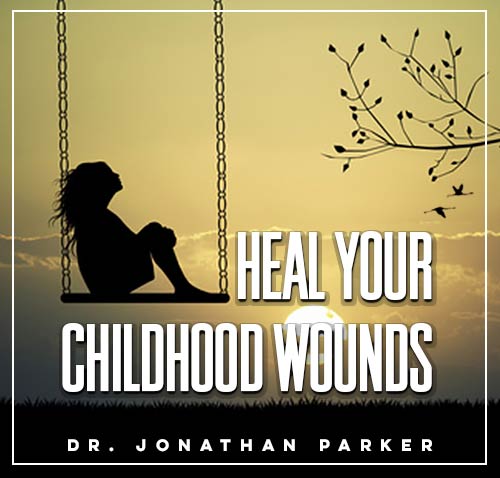Releasing Childhood Pain

Hey there, amazing readers! 🖐️ Just a quick note: yes, we know there are a lot of ads here. Trust us, we get it—it’s not the prettiest look, but they help us keep this blog alive and kicking. Those pesky little ads cover the costs of all the behind-the-scenes magic, from hosting and tech stuff to creating content we hope you’ll love.
We’re committed to delivering quality posts, and your support (even just sticking around despite the ads) means everything to us. So, bear with us, and thanks for helping us keep the good vibes rolling. Now, on to the fun stuff! 😉
TRANSLATE BUTTON AT THE END OF THE ARTICLE
Understanding Childhood Pain
Childhood pain refers to the emotional wounds and traumas that individuals experience during their formative years.
These experiences can range from neglect and abuse to witnessing violence or feeling abandoned.
Understanding childhood pain requires delving into the past to unravel the impact it has had on one’s emotional and psychological well-being.
It is essential to recognize that the effects of childhood pain can linger into adulthood if left unaddressed.
Recognizing the Impact
Childhood pain can have a significant impact on an individual’s life, affecting their relationships, self-esteem, and overall mental health.
Recognizing the impact of childhood pain involves acknowledging how these experiences have shaped one’s beliefs, behaviors, and coping mechanisms.
It is crucial to understand that childhood pain can manifest in various ways, such as anxiety, depression, and difficulty forming healthy attachments with others.
Unpacking Traumatic Experiences
Unpacking traumatic experiences from childhood requires a willingness to revisit painful memories and emotions.
This process involves exploring the events that caused the trauma, understanding how they have influenced one’s life, and identifying the negative beliefs and patterns that have emerged as a result.
By unpacking traumatic experiences, individuals can begin to make sense of their pain and work towards healing and acceptance.
Addressing Emotional Wounds
Addressing emotional wounds from childhood pain involves engaging in therapy, self-reflection, and emotional processing.
It is essential to create a safe space to explore these wounds, express emotions, and challenge negative beliefs.
By addressing emotional wounds, individuals can begin to release pent-up feelings, develop healthier coping strategies, and cultivate self-compassion.
Seeking Professional Help
Seeking professional help is crucial for individuals looking to address childhood pain effectively.
Therapists specializing in trauma-informed care can provide support, guidance, and therapeutic techniques to help individuals navigate their healing journey.
Additionally, mental health professionals can offer personalized treatment plans tailored to each individual’s unique needs and experiences.
Therapeutic Techniques
Therapeutic techniques such as cognitive-behavioral therapy (CBT), eye movement desensitization and reprocessing (EMDR), and mindfulness meditation can be effective in addressing childhood pain.
These techniques help individuals process traumatic experiences, challenge negative thought patterns, and regulate their emotions.
By engaging in therapeutic techniques, individuals can begin to reframe their beliefs, reduce emotional distress, and build resilience.
Healing Through Self-Reflection
Healing through self-reflection involves exploring one’s thoughts, emotions, and behaviors in a compassionate and non-judgmental way.
Self-reflection allows individuals to gain insight into how childhood pain has influenced their current beliefs and relationships.
By engaging in self-reflection, individuals can develop a deeper understanding of themselves, cultivate self-awareness, and foster personal growth.
Developing Coping Mechanisms
Developing healthy coping mechanisms is essential for managing the emotional challenges that childhood pain may bring.
Coping mechanisms such as mindfulness, journaling, exercise, and creative expression can help individuals regulate their emotions, reduce stress, and increase their sense of well-being.
By developing coping mechanisms, individuals can navigate their healing journey more effectively and build emotional resilience.
Building Emotional Resilience
Building emotional resilience is a key aspect of overcoming childhood pain and moving towards healing.
Emotional resilience involves developing the ability to adapt to stress, bounce back from setbacks, and maintain a positive outlook despite challenges.
By building emotional resilience, individuals can navigate their healing journey with greater ease, face adversity more effectively, and cultivate a sense of inner strength.
Finding Support Systems
Finding support systems is crucial for individuals seeking to release childhood pain and heal from past traumas.
Support systems can include friends, family members, support groups, and mental health professionals who provide emotional support, encouragement, and validation.
By connecting with supportive individuals and communities, individuals can feel less isolated, gain perspective on their experiences, and receive the necessary encouragement to continue their healing journey.
Letting Go of Negative Patterns
Letting go of negative patterns that have emerged as a result of childhood pain is essential for personal growth and healing.
Negative patterns such as self-blame, perfectionism, and avoidance can hinder one’s ability to move forward and find peace.
By acknowledging and challenging these negative patterns, individuals can begin to let go of self-destructive behaviors, cultivate self-compassion, and embrace healthier ways of thinking and relating to themselves and others.
Embracing Inner Healing
Embracing inner healing involves accepting one’s past, acknowledging their pain, and committing to a journey of self-discovery and growth.
Inner healing is a process that requires patience, self-compassion, and a willingness to confront difficult emotions.
By embracing inner healing, individuals can begin to release childhood pain, foster a sense of empowerment, and cultivate a deeper connection to themselves and others.
Conclusion
Releasing childhood pain is a complex and challenging process that requires self-reflection, emotional processing, and a commitment to healing.
By understanding the impact of childhood pain, addressing emotional wounds, seeking professional help, and developing healthy coping mechanisms, individuals can begin to release the grip of past traumas and move towards a future filled with healing, resilience, and inner peace.
Remember, healing is a journey, not a destination, and it is never too late to start on the path towards letting go of childhood pain and embracing inner healing.

The Enlightenment Journey is a remarkable collection of writings authored by a distinguished group of experts in the fields of spirituality, new age, and esoteric knowledge.
This anthology features a diverse assembly of well-experienced authors who bring their profound insights and credible perspectives to the forefront.
Each contributor possesses a wealth of knowledge and wisdom, making them authorities in their respective domains.
Together, they offer readers a transformative journey into the realms of spiritual growth, self-discovery, and esoteric enlightenment.
The Enlightenment Journey is a testament to the collective expertise of these luminaries, providing readers with a rich tapestry of ideas and information to illuminate their spiritual path.
Our Diverse Expertise 🌟
While our primary focus is on spirituality and esotericism, we are equally passionate about exploring a wide range of other topics and niches 🌍📚. Our experienced team is dedicated to delivering high-quality, informative content across various subjects ✨.
To ensure we provide the most accurate and valuable insights, we collaborate with trusted experts in their respective domains 🧑🏫👩🏫. This allows us to offer well-rounded perspectives and knowledge to our readers.
Our blog originally focused on spirituality and metaphysics, but we’ve since expanded to cover a wide range of niches. Don’t worry—we continue to publish a lot of articles on spirituality! Frequently visit our blog to explore our diverse content and stay tuned for more insightful reads.







